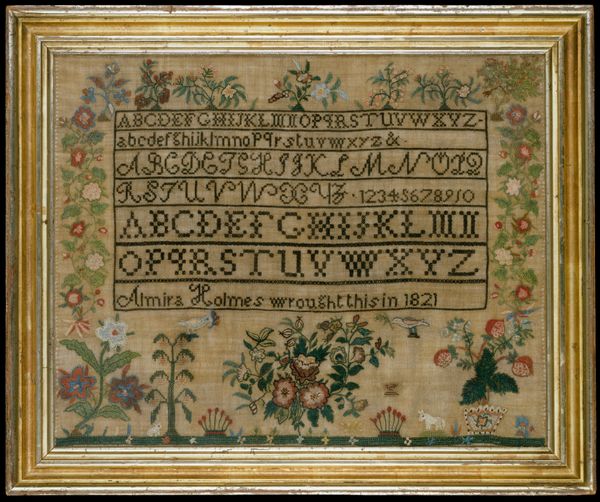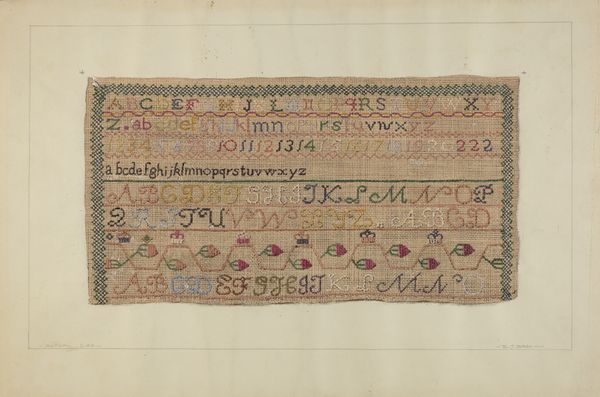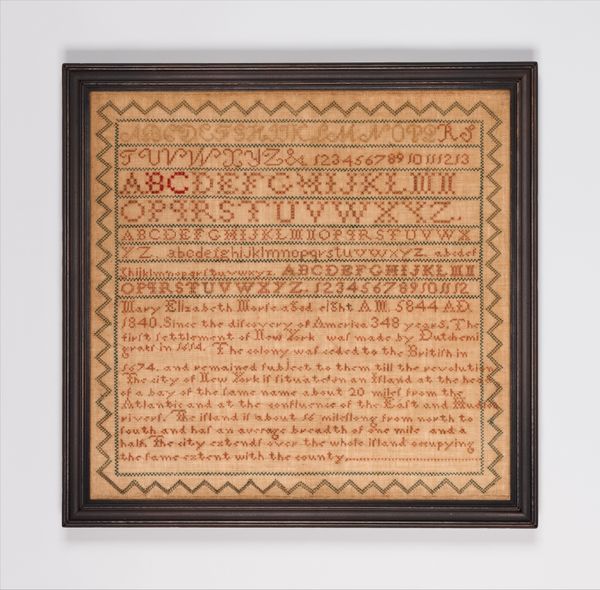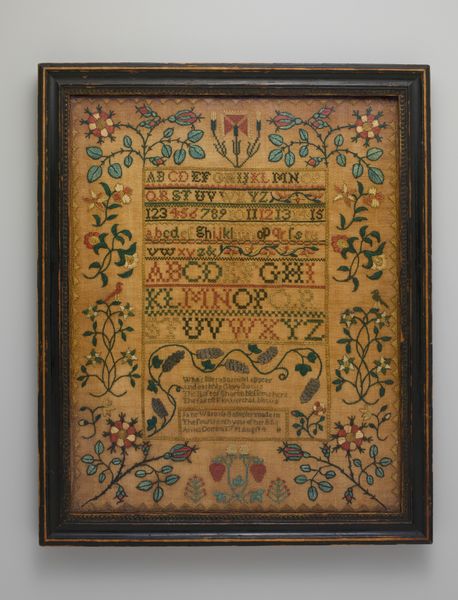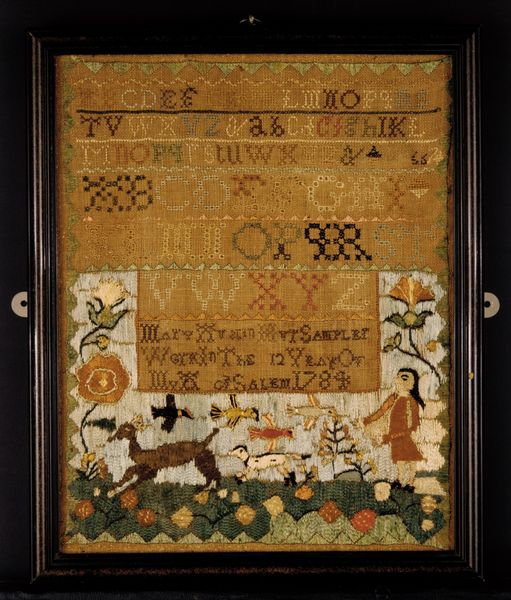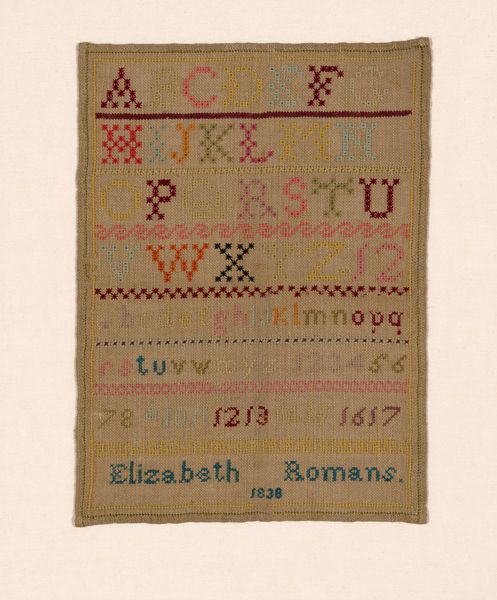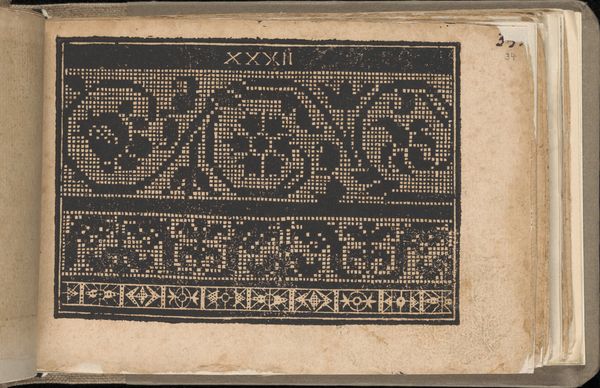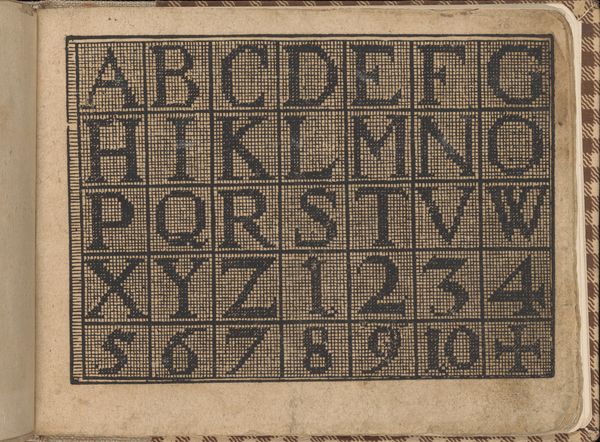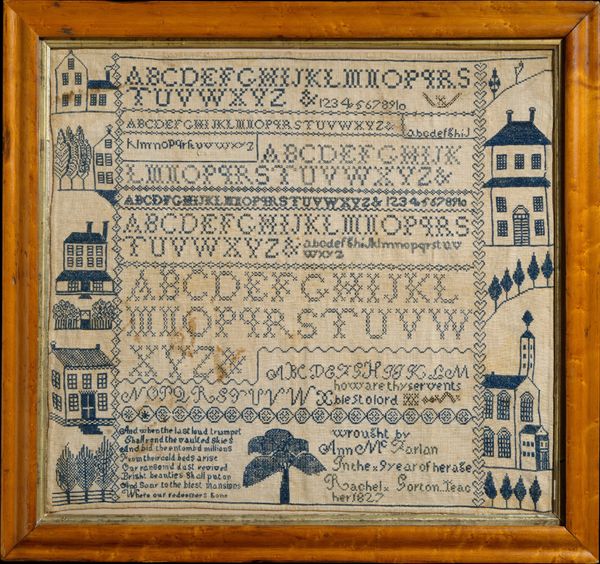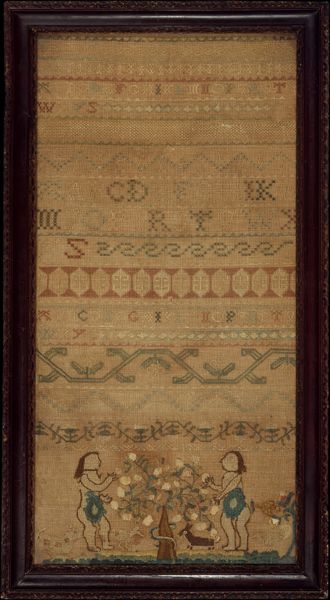
weaving, textile
#
weaving
#
textile
#
folk-art
#
line
#
decorative-art
#
miniature
Dimensions: 19 × 30 cm (7 1/2 × 11 3/4 in.)
Copyright: Public Domain
Editor: This is Rebekah Smith’s "Sampler" from 1794, a textile piece currently held at The Art Institute of Chicago. It's such an intimate piece of folk art, and there's a certain patience in its detailed needlework. It feels deeply personal, yet representative of a specific time. What can you tell me about this piece? Curator: Well, needlework samplers like these were common educational tools, particularly for young women in the 18th century. Think of it less as “art” in our modern understanding and more as a demonstration of skill, a kind of visual resume. It taught girls literacy, basic arithmetic through counting stitches, and of course, needlework techniques essential for maintaining a household. Editor: So it's less about creative expression and more about societal expectations? Curator: Precisely! This sampler embodies the social and cultural expectations placed on young women at the time. By showcasing her needlework skills alongside her name and age—13—Rebekah demonstrates her readiness for her future domestic role. The “ABCs” and numbers, all meticulously stitched, signified her grasp of fundamental literacy and numeracy. Consider how its creation was fostered and valued in its original social setting; would we have the same understanding of its purpose if found outside that context? Editor: I never considered how directly it speaks to the expectations of women at that time. The decorative elements, the stylized flowers—do those symbols tell us something, too? Curator: They absolutely do! Often, these motifs weren’t simply decorative but reflected prevailing social mores. Floral designs can indicate femininity and domesticity, reinforcing her position in society. Editor: Thinking about it as a resume of skills reframes my perception entirely! I guess it's a lesson that objects carry more than aesthetic value, they embody cultural values as well. Curator: Exactly. Objects like this can reveal so much about how different communities functioned and what they prioritized. This humble sampler highlights the intersection of education, gender roles, and social expectations in late 18th-century America.
Comments
No comments
Be the first to comment and join the conversation on the ultimate creative platform.
